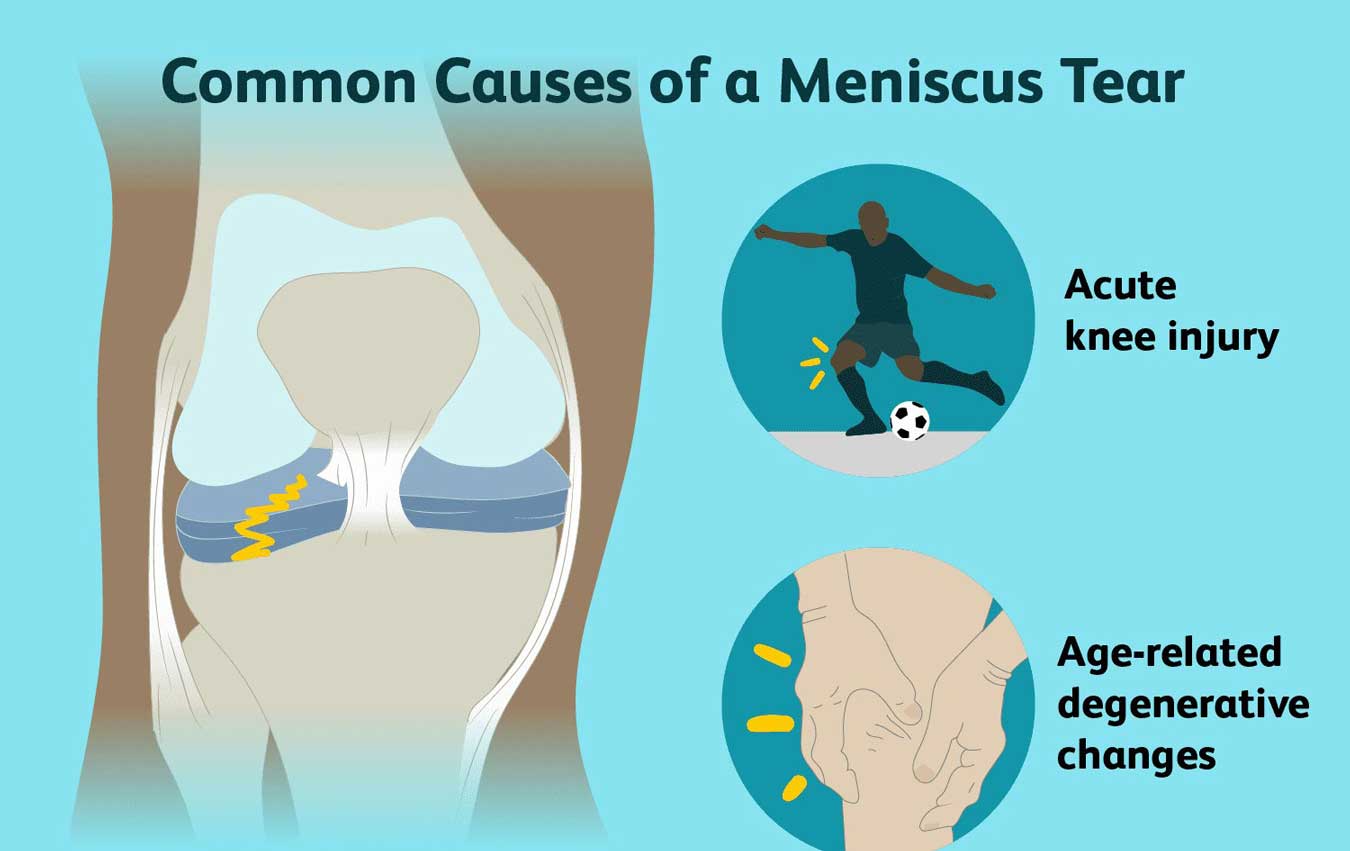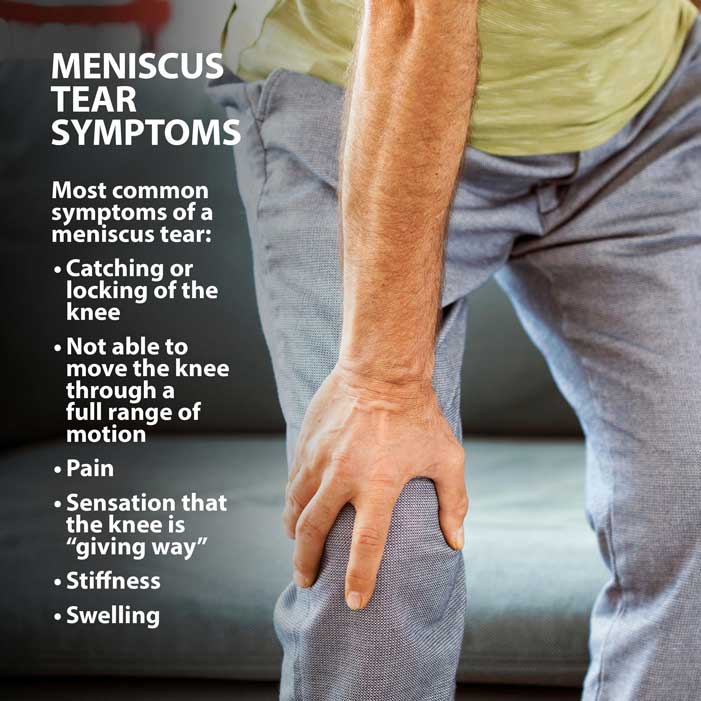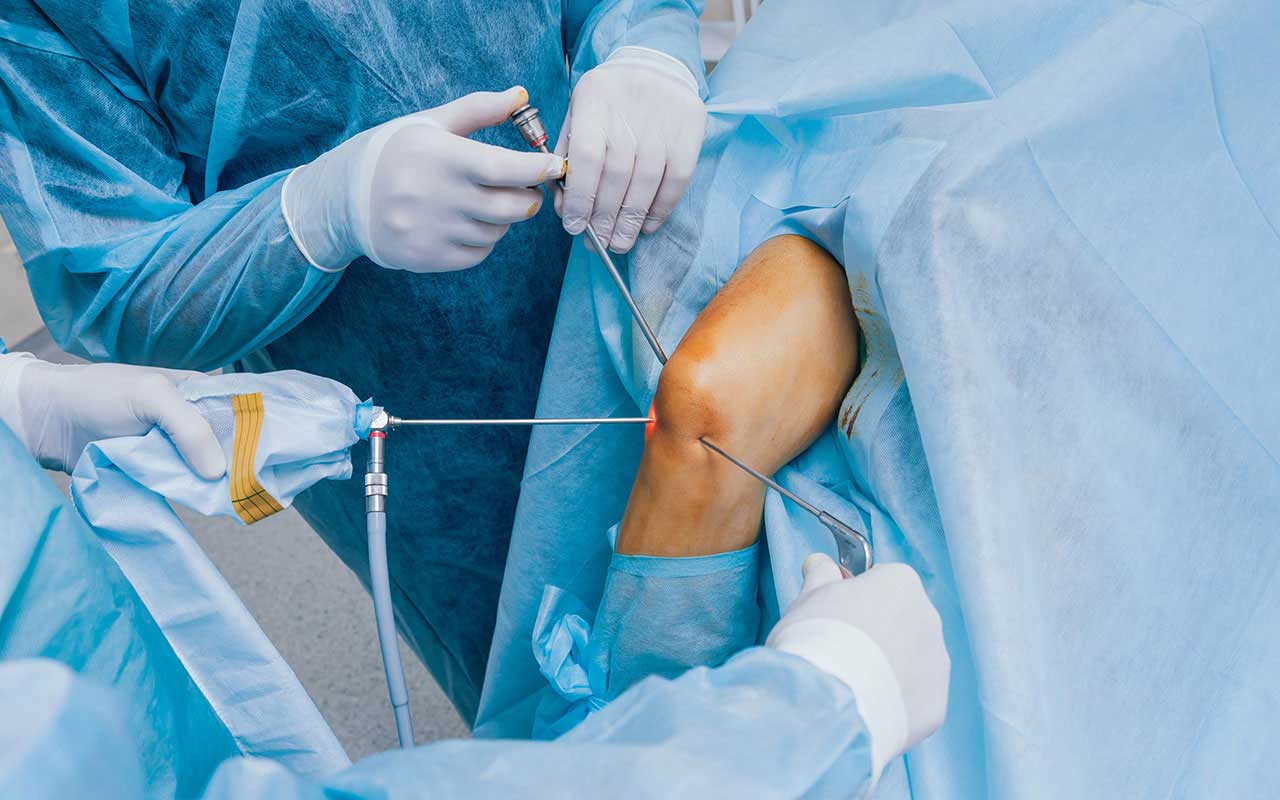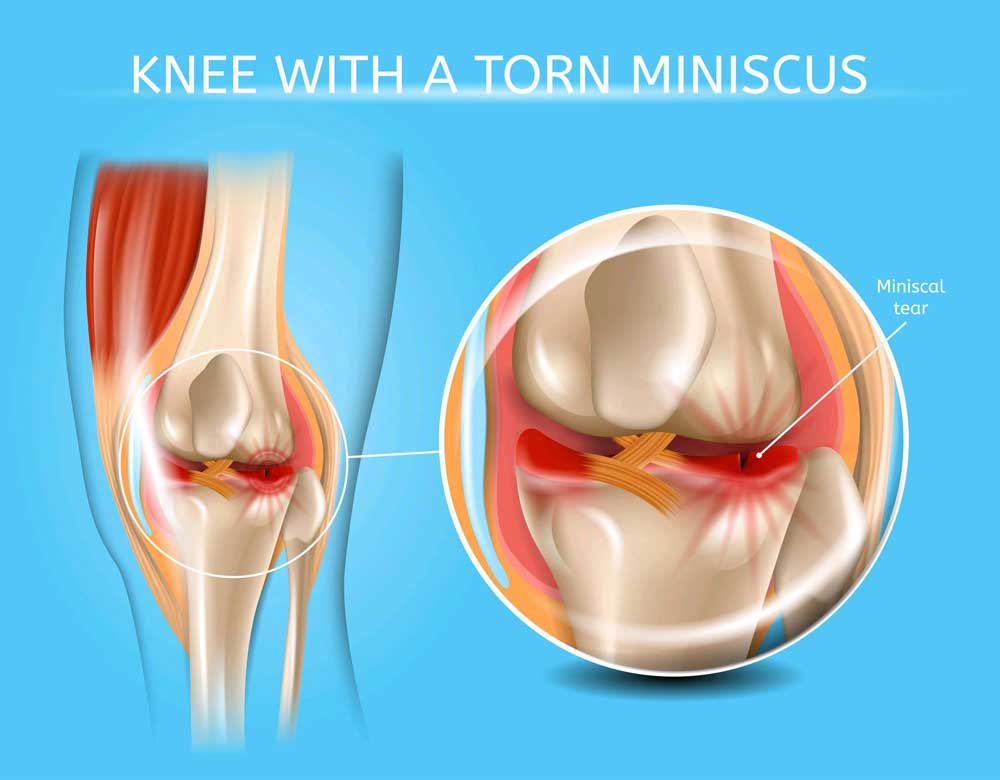MENISCUS TEARS: WHY YOU SHOULD NOT LET IT BE UNTREATED?
A meniscus tear is one of the most common knee injuries, especially among professional basketball players. Certain activities that cause you to forcefully twist or rotate your knee, mainly when you put your full weight on it, can lead to a torn meniscus.
Sportsmen usually suffer from meniscus tears when they twist or turn their upper leg while their foot is planted and their knee is bent. The agility of a professional basketball player is incredible and even confuses the opponents as they can’t tell if they’re going left or right. They sprint, swerve, jump, and dunk as if they do not have bones. But, these seemingly effortless twists and turns can cost heavy damage due to one wrong move. These movements cause the meniscus to tear.
You may usually be able to stand and walk after the initial injury. There might be only a bit of pain depending on the severity of the tear, making it a minor injury. This may make you think that the treatment can wait and you can play through the pain, right? Not necessarily.
If left untreated, a meniscus tear can limit your daily life and ability to participate in exercise and even sports. You can even develop long-term knee problems, like arthritis in serious cases. Additionally, moving around with a torn meniscus could also pull fragments of the cartilage into the joint. This would cause larger knee issues that may require more significant surgery in the future.

WHAT IS MENISCUS?
A piece of cartilage that is tough and flexible, that provides a cushion between your femur or thighbone and tibia or shinbone is known as meniscus. Each knee joint has two menisci that can be damaged or torn during activities that put pressure on or rotate the knee joint.
The meniscus has an important function, including:
- Acts like a shock-absorber.
- Distribution of the weight to the cartilage.
- Stabilizing your knee joint.
- It limits your ability to flex and extend your knee.

The meniscus protects the bones from wear and tear and acts as shock-absorbing cartilage of the knee. A twist of the knee leads to a tear in the meniscus. Sometimes, a piece of the shredded cartilage breaks loose and gets caught in the knee joint, causing it to lock up.
A meniscus tear can occur if you:
- Twisting or over-flexing your knee.
- Quickly stopping or changing direction while running, landing from a jump, or turning.
- Kneel.
- Tear the other ligaments in the knee, such as the anterior cruciate ligament (ACL).
- Squat down low and lift something heavy.
- Get hit on your knee, like during a football tackle.
WHAT DOES THE MENISCUS TEAR FEEL LIKE?
You might feel a “pop” when your meniscus gets a tear. You may still be able to walk on your injured knee and many athletes are even able to keep playing with a tear. The symptoms of the meniscus tear include:
- Pain in the area of the tear.
- Swelling and stiffness.
- A popping sensation during the injury.
- Difficulty bending or straightening the leg.
- Chance for your knee to get “stuck” or lock up.
- Inability to move your knee in a full range of motion.
- Limping
HOW TO DIAGNOSE MENISCUS TEAR?
The symptoms of a meniscus tear are similar to certain medical conditions. You should see your health care provider for a diagnosis.
The orthopedist will conduct a thorough health history and evaluation of the knee. They may also order X-rays and magnetic resonance imaging (MRI) to confirm the diagnosis and further evaluate the knee joint.
If there is an acute injury, the doctor will ask how the injury occurred to help understand the stresses that were placed on the knee. For physical examination the doctor would feel the joint for warmth and areas of tenderness, assess the stability of the ligaments, and test the range of motion of the knee joint and the power of the quadriceps and hamstring muscles.
The doctor may sometimes suggest arthroscopy if your doctor is unable to determine the cause of your knee pain from other imaging techniques.

HOW TO TREAT MENISCUS TEAR?
- RICE Therapy: The doctor would suggest RICE therapy at home to help reduce the swelling and the pain, which includes:
- Rest: Avoid activities that aggravate your knee pain, such as any activity that causes you to twist, rotate or pivot your knee. In case of severe knee pain, using crutches can take pressure off your knee and promote healing.
- Ice: Ice helps in reducing knee pain and swelling. You can use a cold pack, a bag of frozen vegetables, or a towel filled with ice cubes for about 15 minutes at a time.
- Compression: This would help in reducing the swelling as well as blood loss from the affected area. You should wrap your knee with a compression bandage.
- Elevation: To reduce swelling, you should recline when you rest, and put your leg up higher than your heart.

- Medication: Over-the-counter pain relievers such as non-steroidal anti-inflammatory medicines can help ease knee pain. These would include aspirin and ibuprofen to reduce pain and swelling.
- Steroid injection: Injecting corticosteroid medication into your knee joint helps eliminate pain and swelling. Biologics injections, like platelet-rich plasma, also provide relief from meniscus tears.
Muscle-strengthening exercises - Surgery: Surgery is an effective way to repair a torn meniscus if non-invasive treatments do not work. The surgeon may remove all or part of the meniscus If the tear is too big to repair. After recovery, your knee will be more stable, and you’ll be less likely to develop additional knee problems.
- Arthroscopic surgery – This is a minimally invasive procedure used to treat meniscal tears. The surgery involves a small, lighted, optic tube or arthroscope, which is inserted through a small incision in the joint. Images of the inside of the knee projected on a screen help the doctor to repair or trim out the torn portion of the meniscus.
- Meniscus repair – The meniscus tear can be repaired by suturing or stitching, the torn pieces together. The success of repair would depend on the type of tear, and the overall condition of the injured meniscus. The recovery time for a repair is longer than that in meniscectomy.
- Partial meniscectomy – During this procedure, the damaged meniscus tissue is trimmed away. The procedure would allow immediate weight-bearing as well as a full range of motion soon after surgery.

OUTLOOK
Meniscus tears are very common knee injuries among sportsmen. You may return to pre-injury abilities quickly with proper diagnosis, treatment, and rehabilitation. Meniscus tears are tough to prevent as they’re usually the result of an accident. You should not avoid the pain in the knee and visit your health care provider.
If you or anyone you know is suffering from knee injuries, our expert providers at Zenith Injury Relief & Wellness Clinic will take care of your health and help you recover.
Call us on 972-210-0033 to book an appointment with our specialists, and begin living your life pain-free.
